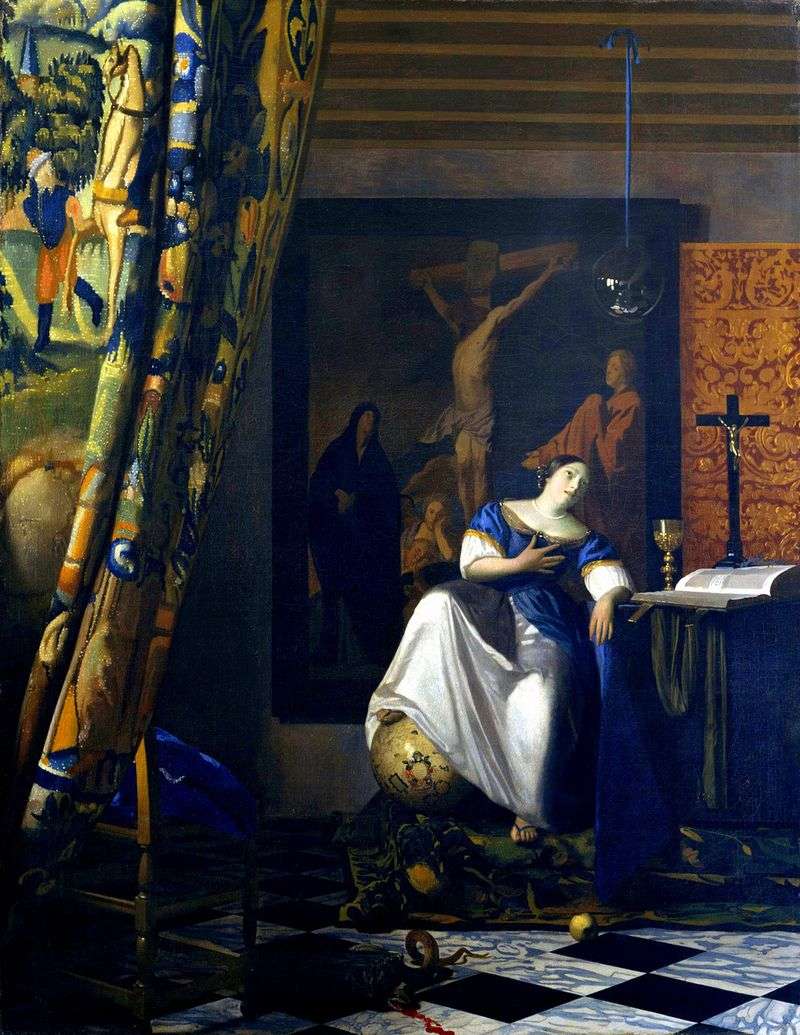
The painting, which differs from other works of the artist in unusually large dimensions, contains an unambiguous symbolic message. Located in the foreground is a richly embroidered curtain, similar to a trellis, introduces the viewer into the scene, the Image of the embodiment of the Faith. It is surrounded by symbolic attributes, drawn from Cesare Ripa’s famous book “Iconology”, translated in the middle of the 17th century. in Dutch. White and blue colors are an obvious embodiment of purity and truth. The hand, pressed to the chest, indicates the depth of faith coming from the heart.
On the wall there is a reproduction of the painting “The Crucifixion” by Jacob Jordaens, an Antwerp painter, which even more convincingly emphasizes the significance of the scene. It is interesting that the painting depicted on the canvas was Vermeer’s property and was mentioned in the inventory of the artist’s property, compiled after his death. Restraint of the composition and a more severe coloring are manifested in the artist’s later works. They are accompanied by a noticeable influence of classical concepts, which gradually spread in the Dutch art of that era. We can not exclude that the canvas was written by order.
The crucifixion, the cup and the Bible, placed on the table next to the girl, underscore the fundamental role of the sacrament of the Eucharist and the sacrifice of Christ in the Catholic religion. Counter-reform, especially in open polemics with the doctrine of Protestantism, concerning symbolic value, imputed bread and wine, recognized the Communion as a special role.
The apple lying at the feet of the Faith, according to the Christian tradition, represents a forbidden fruit from the Garden of Eden, torn by Eve, tempted by a serpent, and therefore became the symbol of the fall of man and mortal sin. In fact, the Holy Scripture does not say what kind of tree the knowledge belongs to. But the Latin word malum means both male and malus, hence it follows that the tree should be apple trees.
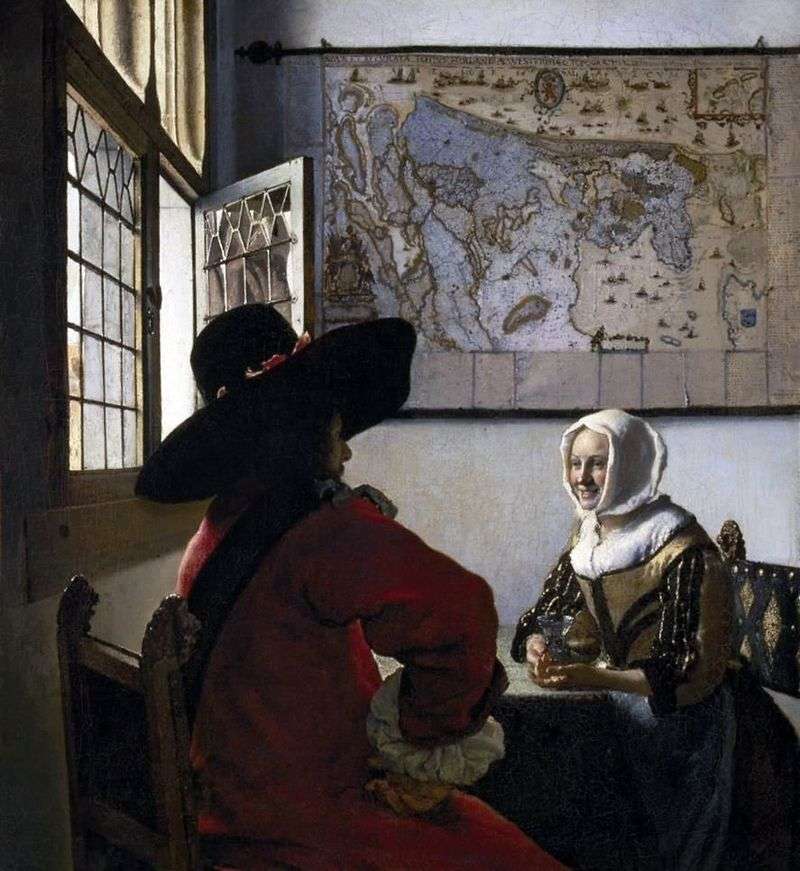 Officer and laughing girl by Jan Vermeer
Officer and laughing girl by Jan Vermeer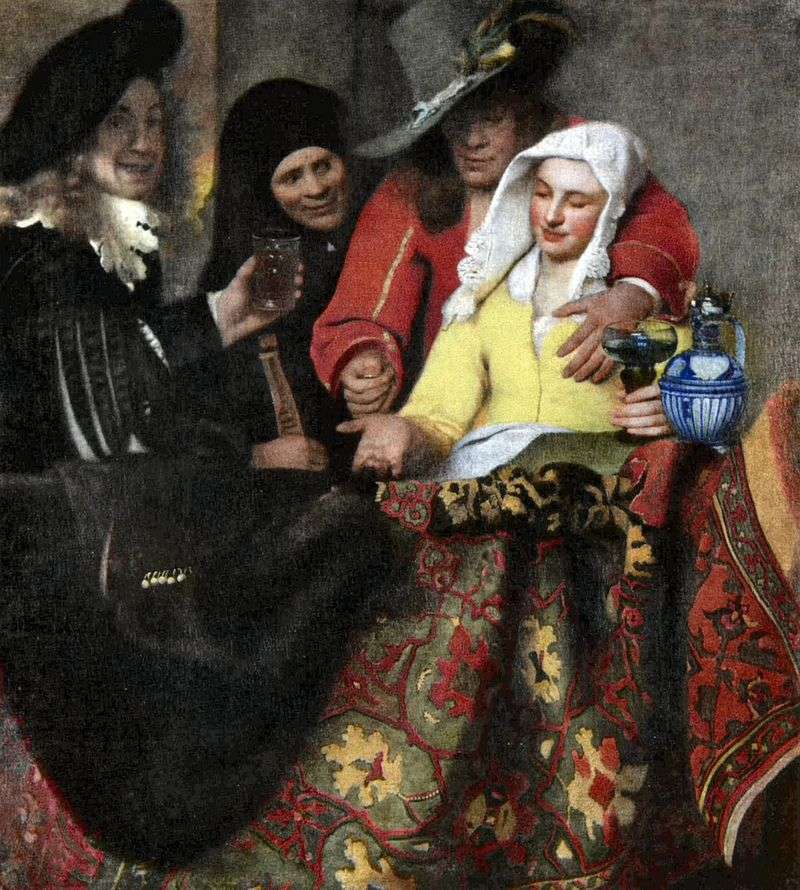 In the vault by Jan Vermeer
In the vault by Jan Vermeer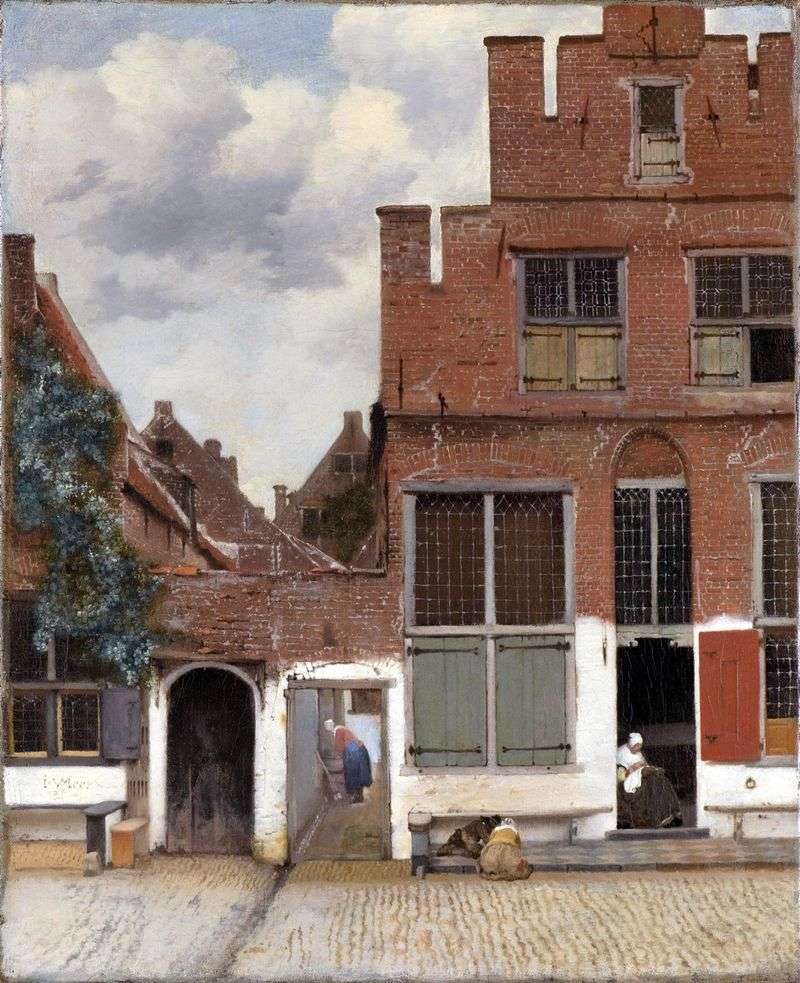 The street of Delft by Jan Vermeer
The street of Delft by Jan Vermeer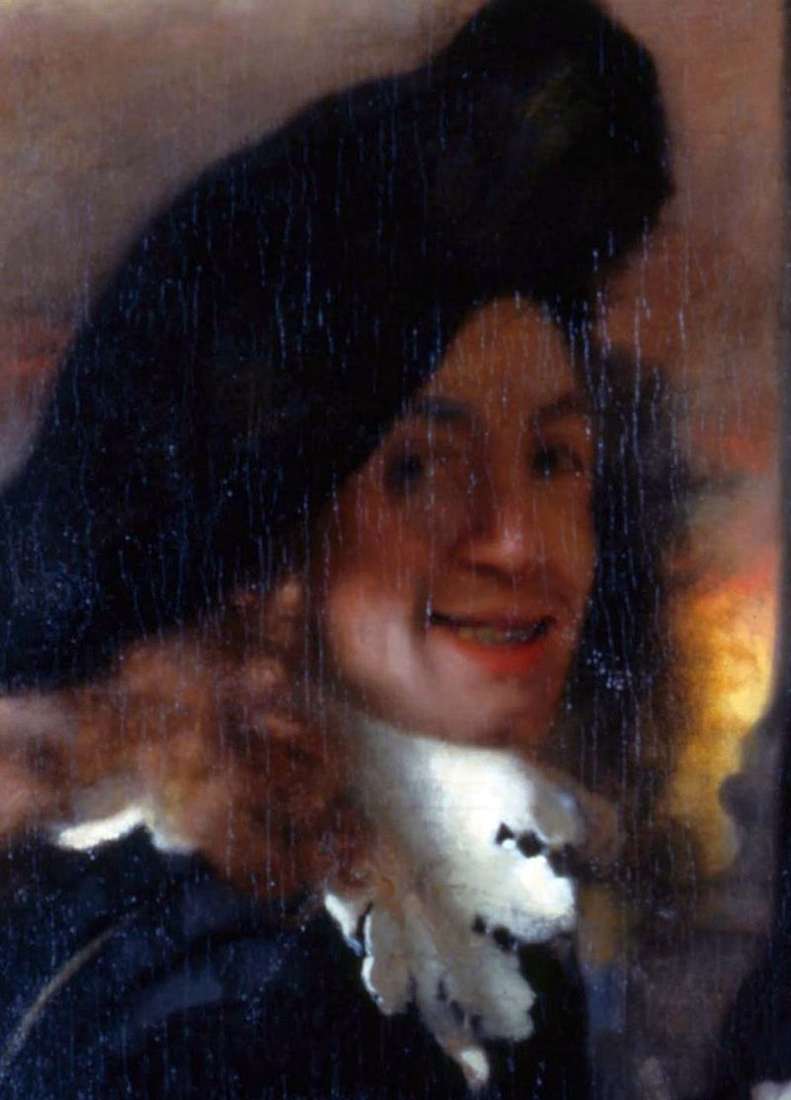 Self-portrait by Jan Vermeer
Self-portrait by Jan Vermeer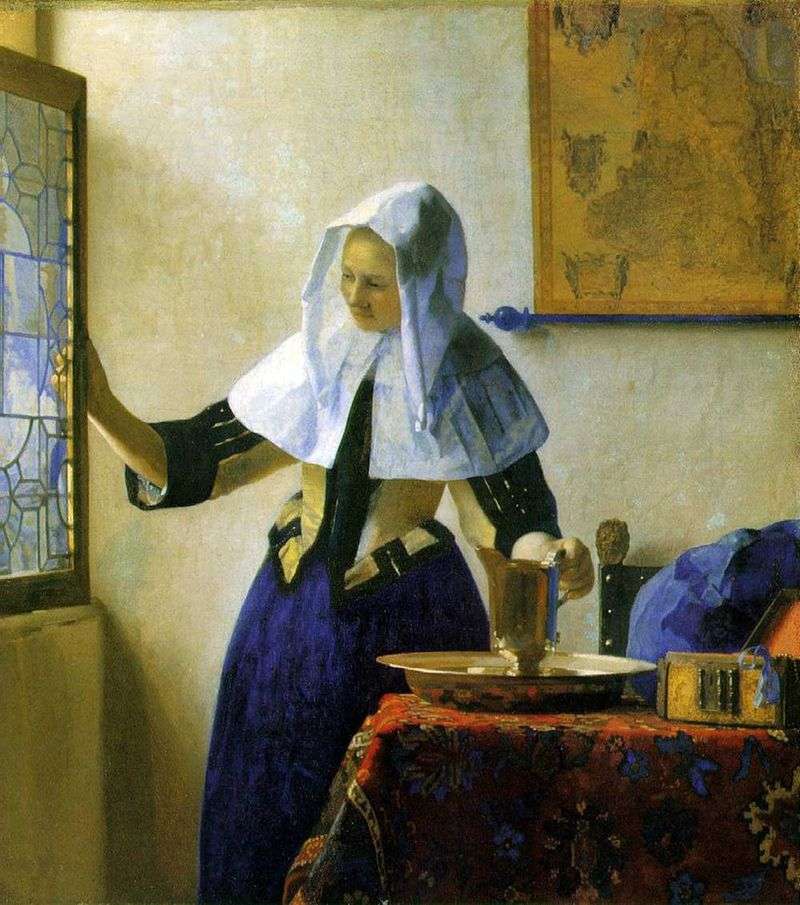 Girl with a water jug - Jan Vermeer
Girl with a water jug - Jan Vermeer Girl, writing letter by Jan Vermeer
Girl, writing letter by Jan Vermeer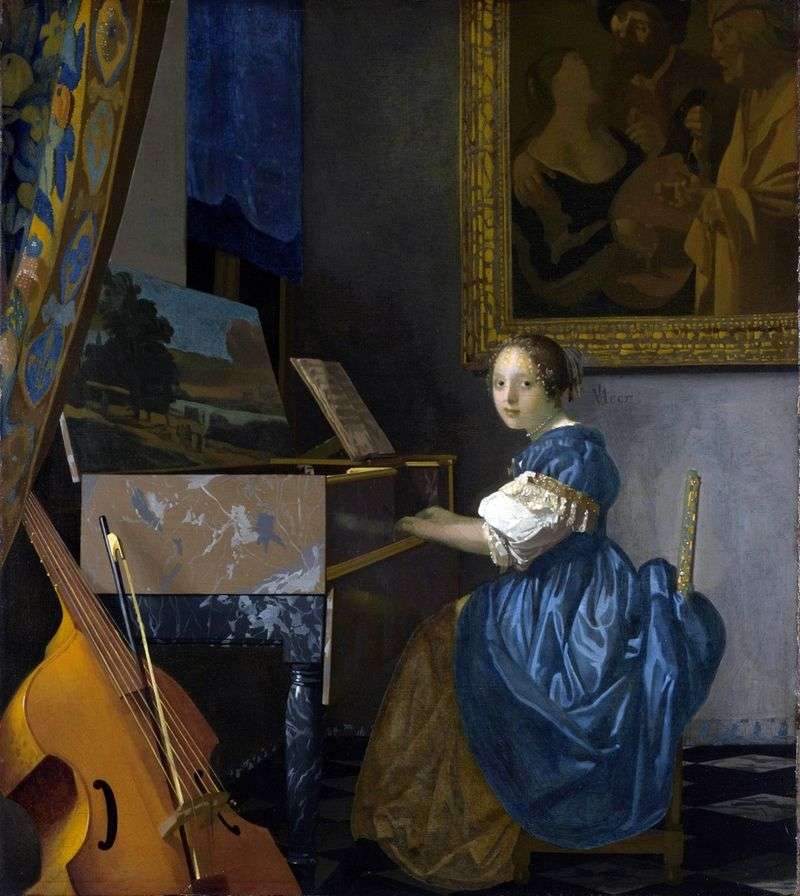 The lady at the back by Jan Vermeer
The lady at the back by Jan Vermeer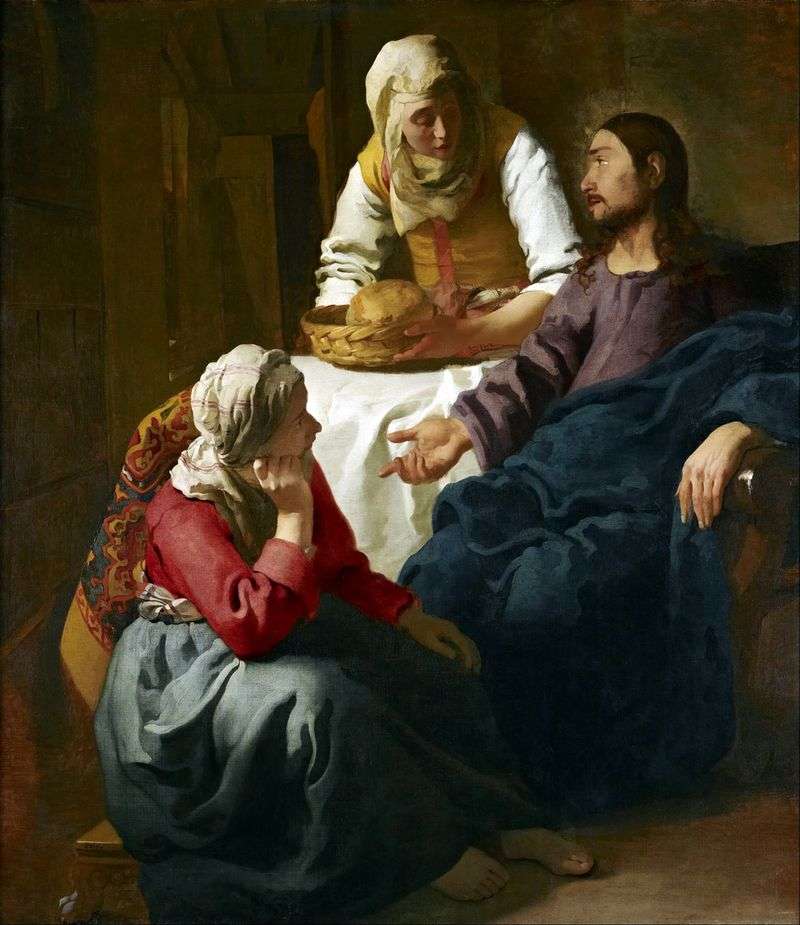 Christ in the house of Martha and Mary by Jan Vermeer
Christ in the house of Martha and Mary by Jan Vermeer